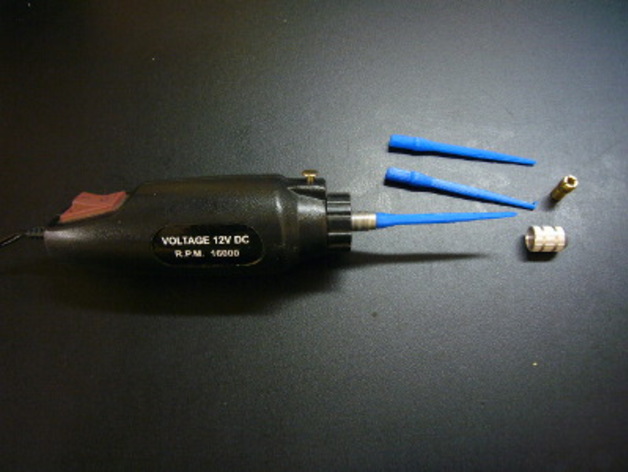
Spin welding rod
thingiverse
These rods are designed for use with rotary tools.\nIn the 1980s, Mattel toys introduced a plastic model building kit that included a rotary tool to weld parts together using friction-welding technique.\nThis spin-welding / friction-welding method is commonly used for repairing and joining 3D parts. Watching videos on YouTube will help understand how it works.\nI was dissatisfied with regular 1.75mm filament as rod material, so I created these thicker, stiffer rods that work much better.\nThe first rod fits the Dremel collet perfectly - simply remove the collet, insert the rod, and secure it with the retaining nut.\nThe second rod is designed for a light-duty, 12V rotary tool available at Harbor Freight stores. Remove the larger collet and insert the rod in the same way.\nYou can find the rotary tool at harborfreight.com by searching "rotary tool". Item #63235 or #97626 are current valid item numbers.\nThe last rod is a near 1/8 inch (3mm) diameter straight rod that fits any 1/8 inch collet, just like a regular bit.\nBe aware that the Dremel's high speed of 35,000 RPM can cause these rods to break off and fly away - wear eye protection at all times. The cheap-tool max is 16,000 RPM, which is as fast as I would recommend.\nThe Cheap-Tool single speed On/OFF switch is ideal for most applications since little power is required.\nIf you're familiar with welding, you already know how to prepare joints (like beveling edges). If not, a few minutes of study will cover the basics. Running a bead of plastic is surprisingly similar to stick welding - some practice is worth the effort.\nThe rod must have nearly the same hardness and melting temperature as the material being welded. Ideally, the printed welding rod should be made of the same material as what you're trying to weld together.\nPrinting notes:\nTo print these rods laying flat on their sides so layers are longitudinal for strength, or they may snap like spaghetti when bent.\nThin round shapes can be challenging to print - on my Afinia printer, more than 30 degrees support angle was needed, or the software had trouble interpreting the STL file. Increasing the angle to 40 degrees worked fine. All other settings were at default values.\nThe files are in SAE format. If your Metric software sees tiny shapes, try scaling up (X,Y and Z) by a factor of 25.4.
With this file you will be able to print Spin welding rod with your 3D printer. Click on the button and save the file on your computer to work, edit or customize your design. You can also find more 3D designs for printers on Spin welding rod.
